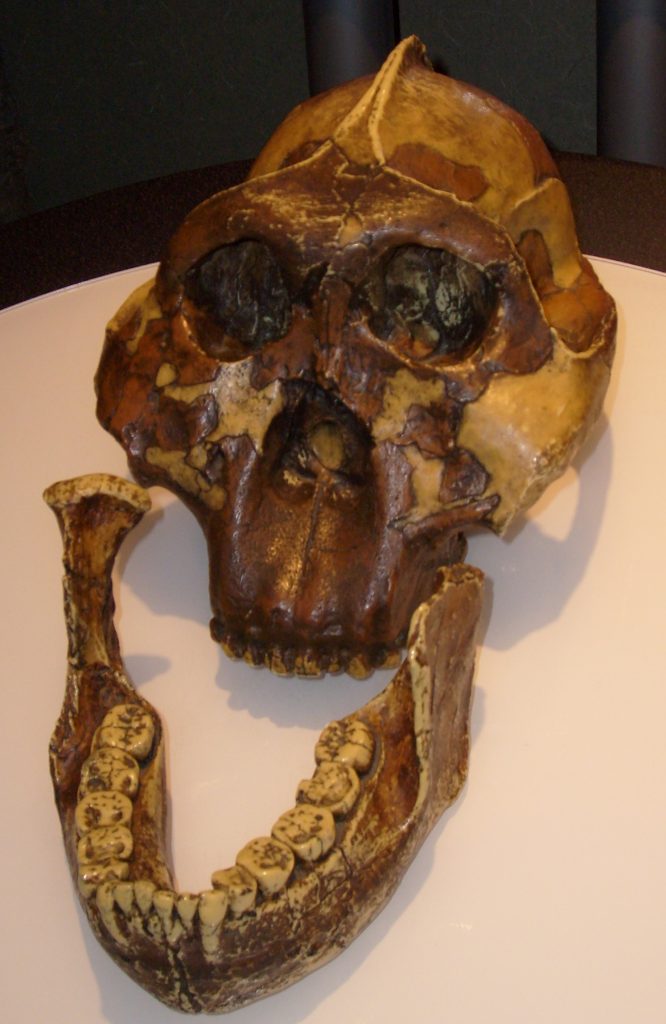6.3 Evolutionary Mismatch
Evolutionary mismatch, or the Mismatch Hypothesis, suggests that it is possible for a trait to be adaptive in one environment, but that it can become maladaptive when the environment changes or the organism is moved. This is most common in longer-lived species or those who fill rapidly changing niches. For example, if a finch evolves a fine, pointed beak for extracting insects from tree bark, but finds themselves suddenly in an environment where the trees die out and are replaced with small bushes, they will no longer be successful in obtaining food.
Mismatch is increasingly important in a human-made world. As a result of light pollution, loggerhead turtles are nesting less, under increased predation, and more frequently disoriented after hatching and moving away from, instead of towards, the ocean. As a result, their populations are rapidly dwindling loggerheads were officially listed as endangered in a 2011 ruling via the Endangered Species Act.
In general, the Mismatch Hypothesis suggests that a trait which was adaptive or neutral in one environment, may not be advantageous in another. Mismatch usually occurs when the environment changes too rapidly for a species to adapt. This often occurs in longer-lived species because there is less time for adaptation to emerge, but it can happen in any species. Without reproductive success, a species can become extinct as a result – like the turtles. Evolutionary mismatches can be biological or behavioral. Let’s explore.

Biological Mismatch
Biological mismatch occurs when physiological or morphological changes are too slow. For example, within hominid evolution, the genus Paranthropus lived approximately 2.6 – 0.6 million years ago. They had extremely robust skulls, wide strong cheeks, and large, flat teeth. One particular species, known as “Nutcracker Man,” P. boisei ate hard, abrasive foods. Yet surprisingly, there is little to no fracturing on the teeth.
Unfortunately, P. boisei, along with the other members of his genus, were overly specialized to these particularly difficult to process food sources. As the climate began to change, they were less capable of finding food to fit their dietary needs. Eventually, they found themselves in competition with the tool-producing genus Homo, and ultimately died out before they could adapt.

In modern humans, metabolic diseases like diabetes and heart disease are on the rise. There is a clear, evolutionary reason – our diet and our activity level are mismatched to our current environment.
Before industrialization, transportation, and farming, humans walked. We walked to reach water. We walked to find ripe fruit. We walked to find prey, and we walked to fish. Based upon evidence from modern day foragers (remember, ethnographic analogy) humans evolved to walk 3-5 kilometers (approximately 2-3 miles) per day in search of calories. Additionally, the human EEA was not filled with high fat, high sugar, and simply, high calorie foods the way most consumer societies are. Most meats were extremely lean, sugar came primarily in the form of fruits and occasional honey, and most carbs were obtained from ground tubers (similar to potatoes, though with less glucose). This means, we evolved to walk a lot in search of meager calories each day.
How does this affect us now? To seek the sugars and fats we needed to feed our brains and bodies; we would become highly motivated by cravings. We prized these micronutrients when available, and they made us feel good (remember dopamine?). Only now, we do not have to walk 3 kilometers to find them – we only need to drive to our nearest supermarket. Plus, rather than being content with the small handful of berries available or a single honeycomb, there are aisles upon aisles of our favorite treats (and trust me, the marketing agencies know we want these foods).
The resulting mismatch of our evolved metabolism and our modern environment, combined with the ability to manufacture quickly available fats and sugars (yes, high fructose corn syrup does enter your bloodstream quicker than refined sugar), means we can binge on foods which were once scarce. And we can do this without burning even half of what we consume.
If you are interested in learning more about evolutionary mismatch and the human diet, I highly recommend reading Burn: New Research Blows the Lid Off How We Really Burn Calories, Stay Healthy, and Lose Weight by Herman Pontzer.
Behavioral Mismatch
Of course, mismatch does not need to solely be biological. This is especially true in reflection on the HPA axis, serotonin, and the rest of the neuroendocrine system. In his acclaimed book, Why Zebras Don’t Get Ulcers, Robert Sapolsky draws connections between prolonged stress, social hierarchies, and diseases of the immune system. He also explores how stress affects sleep and may lead to addiction in our attempt to self-medicate and counter the HPA axis’ prolonged activity.
Behavioral mismatch can also affect emotions and cognition. The best way to identify whether a trait is the result of evolutionary mismatch, we can select a trait currently viewed as maladaptive (e.g., depression) and ask how it may have been adaptive in the past. To do this, we must clearly define what depression looks like –it’s ontogeny, mechanism, and behavioral expression.
a primate of a family ( Hominidae ) that includes humans and their fossil ancestors and also (in recent systems) at least some of the great apes.
the ancestral environment to which a species is adapted.

